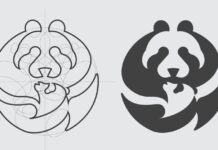
Before moving towards the brand identity prism, we will play a game of term suggestion. Tell us, when you think about Land Rover, what perception builds up in your mind? Awesome vehicles with outstanding capabilities, lush outlook, durable and versatile design, etc. Whatever came into your mind was positive.
Do you know why? This is because Land Rover is a powerful brand. The reviews from the start are honest, positive, and brilliant. Its specialties and company image made it easy to recognize, which is why we were very clear in giving its reviews. The values of a company are a base of nurturing the loyalty of the consumer. The product durability and legacy shape up our views. Only some of us can afford this brand, but it does not mean that we can’t accomplish the exact objectives. We definitely can display our brand values that generate positive results. Whether you are dealing with a startup or owning an industry, the Brand Identity prism application is always there.
What is meant by Brand Identity?

Brand identity is an opinion and perception of how the public views your company’s products and services. It is a projection of how the public views your services. It is the outside world view of your company. According to Jeff Bezos, Branding is the feedback of people that they give in your absence.
What Brand Identity Prism means?
This idea was put forth in 1986 by J. Kapfere, and it is commonly known as Kapfere Brand Identity Prism. This concept is used for the description of a business’s image through its known features. It visualizes the relationship between the brand and its characteristics with each other. It helps companies and their teams build a sturdy and stable brand identity to have the power that reflects the company’s core values. This prism has six characteristics mentioned by marketers at the top and consumers at the bottom. On the other side, internalization and externalization of remaining features are characterized. The Brand Identity prism proposes that a company’s success is determined by how a company utilizes the six important elements mentioned below.
Physique

The physique of a company is based on brand characteristics and iconography. It is based on how a brand is responsible for giving a clear visual presentation of how they aspire to their services and what customers wish regarding perceiving your company image. You take notice of what your services are looking like in front of your clients. Which emotions are being instilled and how they appear physically. It contains noticeable physical characteristics of a certain company or brands like its logo, color scheme, and the assets of other products that are intensely linked with your company’s products in the sight of your customers.
Personality
It can be described as outer behavior. This means how a brand is communicating with the outside public. It incorporates your tone, voice, designs, messages, content, etc. Every one of us knows about Coca Cola, a popular fizzy drink. They mostly play their persona with vibrant colors, scripted font, the depiction of family love, care, etc. In short, a brand decides its nature and voice. After deciding on these, it is integrated with your social presence platforms like website, application, etc. The personality of a brand can be fun-loving, lively, truthful, and sympathetic. This element can be conveyed alone through voice, but the combination with design also plays an imperative part.
Culture

Culture is a value of a system upon which the behavior of a business is based. Every country has its own culture, tradition, norms, and values. In the US, the tradition will be different from the other nations of the world. While deciding on the culture, you have to imply the culture of your state in your business. Your own culture will give you a platform to play with things and play with your creativity. It will be beneficial for you and will bring positive outcomes for your company’s business. It also includes the internal culture of a business company. Your workplace culture also recognizes your brand image.
Relationship
This element can be defined as the relationship of a company with their clients. What were customers expecting from you? Do the customers’ needs and hope with the company are meeting properly? Are the customers happy with the product result? There should be a relationship of trust, admiration, and mutual understanding for a worthy business and company name.
Customer’s Reflection

A brand has to look upon several consumer personas and a check out of their target market’s subdivision. Does it include the look of the target audience? Who is the brand’s ultimate buyer? As discussed, brands have limited characters, but there’s typically one group that stands out for the brand called loyalists, which the company targets in their messaging.
The self-image of the customer
This is how the consumer perceives themselves. They understand the consumer’s ultimate individuality regarding appearances and behavior; and what they desire? Brands have the power to object to their message consequently. Get to know your customer’s ideal to be intelligent, fulsome, and sophisticated, etc.? Work on what your customer wants to look like and try to design your brand like reflecting their customer aspirations.
Working of a brand identity prism

The concept of brand identity is not newly born; it is with us for the last twenty-five years. It is widely used up till now even though many new systems have made their way. It works like magic but how? It bounds the company to give thought to many characteristics that will enhance and build and strengthen the foundation of a brand’s existing identity. It gives you an image and an idea of how your brand is being perceived and presented at the market level. It makes you more creative. But professional supervision is always needed who tells you about your target audience, customer’s expectations, and how to cultivate loyalty. For more info, check digitechwebdesignaustin.com.











